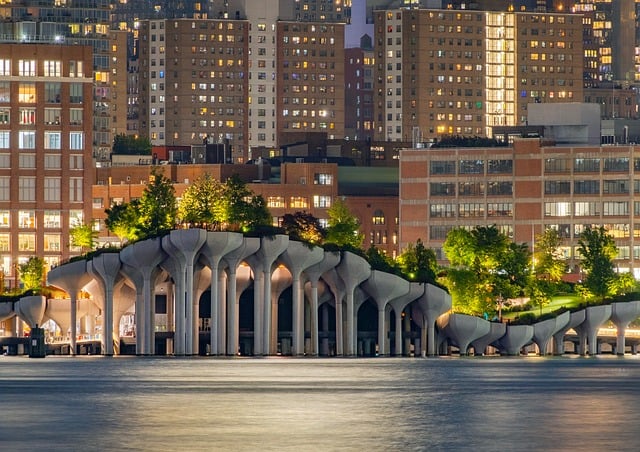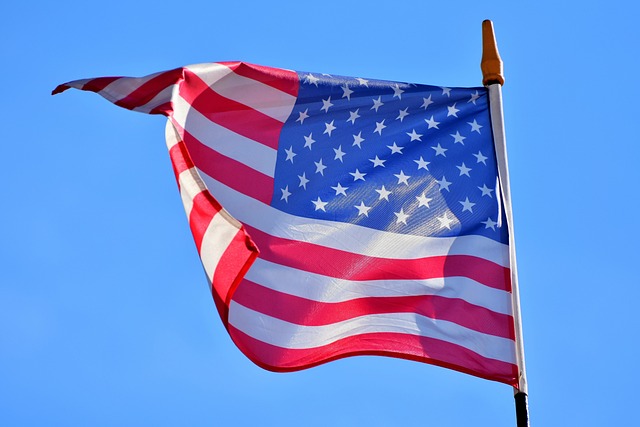Fade-resistant fabrics like the 5×8 Nylon American Flag are a game-changer in textiles, tackling color fading and ensuring longevity both indoors and outdoors. Specialized weaving techniques and treatments make nylon a superior choice for outdoor flags, maintaining vibrant colors even under intense sunlight and weather. This flag's tight weave structure and high-quality materials offer durability and cost-effectiveness for various settings. Easy maintenance through proper cleaning and storage further enhances its performance, making it a sustainable investment.
Discover the secret to vibrant, long-lasting colors with fade-resistant fabrics. This article explores why these materials are essential for outdoor displays, such as the iconic 5×8 Nylon American Flag, known for its durability. We’ll delve into how fabric construction plays a pivotal role in color retention and provide practical tips for maintaining these resilient textiles. From understanding the technology behind fade resistance to real-world case studies, this guide offers valuable insights for anyone seeking enduring visual impact.
- Understanding Fade-Resistant Fabrics: Why They Matter
- The 5×8 Nylon American Flag: A Case Study in Durability
- How Fabric Construction Impacts Color Retention
- Maintaining and Extending the Lifespan of Your Fade-Resistant Fabric
Understanding Fade-Resistant Fabrics: Why They Matter

Fade-resistant fabrics are a game-changer in the world of textiles, offering a solution to one of the most common complaints about clothing and home goods: color fading. Understanding why these fabrics matter is essential, especially when considering iconic symbols like the 5×8 Nylon American Flag. Fabrics that resist fading ensure colors remain vibrant over time, preventing the need for frequent replacements. This is particularly crucial for outdoor flags exposed to varying weather conditions and sunlight intensity.
The impact of fade resistance extends beyond flags; it’s a factor that influences the longevity of any fabric product. Whether it’s clothing, upholstery, or decorative items, maintaining vivid colors is desirable. Fade-resistant fabrics achieve this through specialized weaving techniques, treatments, or the incorporation of UV-protective substances. For instance, 5×8 Nylon American Flags are renowned for their durability and colorfastness, making them suitable for long-term display both indoors and outdoors.
The 5×8 Nylon American Flag: A Case Study in Durability

The 5×8 Nylon American Flag serves as a compelling case study in the durability and fade-resistance of nylon fabric. Crafted with high-quality nylon, this flag is designed to withstand harsh weather conditions, from scorching sun to relentless rain, without compromising its vibrant colors or structural integrity. Nylon’s natural resistance to fading ensures that the bold red, white, and blue stripes remain vivid even after prolonged exposure to UV rays, making it a superior choice for outdoor displays.
This specific 5×8 nylon flag is not just a symbol of national pride; it’s an embodiment of technological advancement in fabric manufacturing. The compact size allows for easy storage and transportation, while its durability makes it a sustainable investment for various settings, from schools and businesses to public parks and homes. Its longevity means less frequent replacements, saving users both time and money in the long run.
How Fabric Construction Impacts Color Retention

The construction of a fabric plays a significant role in determining how well it retains its color over time, especially for vibrant and long-lasting designs like the 5×8 Nylon American Flag. In the case of this flag, the fabric’s weave structure is crucial. A tighter weave, where each thread is closely interwoven, provides better colorfastness as it restricts the movement of dyes during washing and wear. This is why nylon, known for its tight knit, is often chosen for outdoor flags; it ensures the red, white, and blue remain vibrant even after prolonged exposure to sunlight and weather conditions.
Contrastingly, looser weaves may allow dyes to shift and bleed, leading to color fading. Different construction techniques offer various levels of color retention. For instance, knitted fabrics have elastic properties that can cause dyes to stretch and eventually fade, whereas woven fabrics with a dense texture provide better protection for the pigments. Understanding these fabric characteristics is vital for creating durable products, ensuring that colors remain vivid and intact, even in challenging environments.
Maintaining and Extending the Lifespan of Your Fade-Resistant Fabric

Maintaining and extending the lifespan of your fade-resistant fabric, such as a 5×8 Nylon American Flag, requires minimal effort but offers significant benefits in preserving its vibrant colors. Regular cleaning with mild soap and warm water is recommended to prevent buildup of dirt and stains. Avoid using harsh chemicals or bleach, which can damage the fabric fibers. Air drying is ideal to ensure the fabric retains its shape and colorfastness.
Beyond cleaning, proper storage plays a crucial role in prolonging the life of your fade-resistant fabric. Keep it folded neatly in a cool, dry place away from direct sunlight, heat sources, and moisture. Using a protective cover or bag can further safeguard against dust and fading. By implementing these simple care practices, you’ll ensure that your 5×8 Nylon American Flag remains as vibrant and durable as the day you received it.
